Abstract
Surveys were conducted in the southern Malay peninsula to assess intestinal parasitism in the aboriginal ethnic minority groups. Faecal specimens from 1 273 persons were examined by the thiomersal—iodine—formol direct-smear technique. Prevalences are reported and, for helminth infections, data on worm burdens. The state of sanitation in each of 9 cultural-ecological groups was assessed by means of a simplified system of scoring for variables. Particular attention was paid to relationships between cultural and ecological factors, sanitation, and observed patterns of intestinal parasitism. The author also discusses the fact that the number of parasitic species diminishes in habitats simplified by man, whereas an increase occurs in the prevalence and intensity of the more adaptable species that persist in ecosystems of low complexity.
Full text
PDF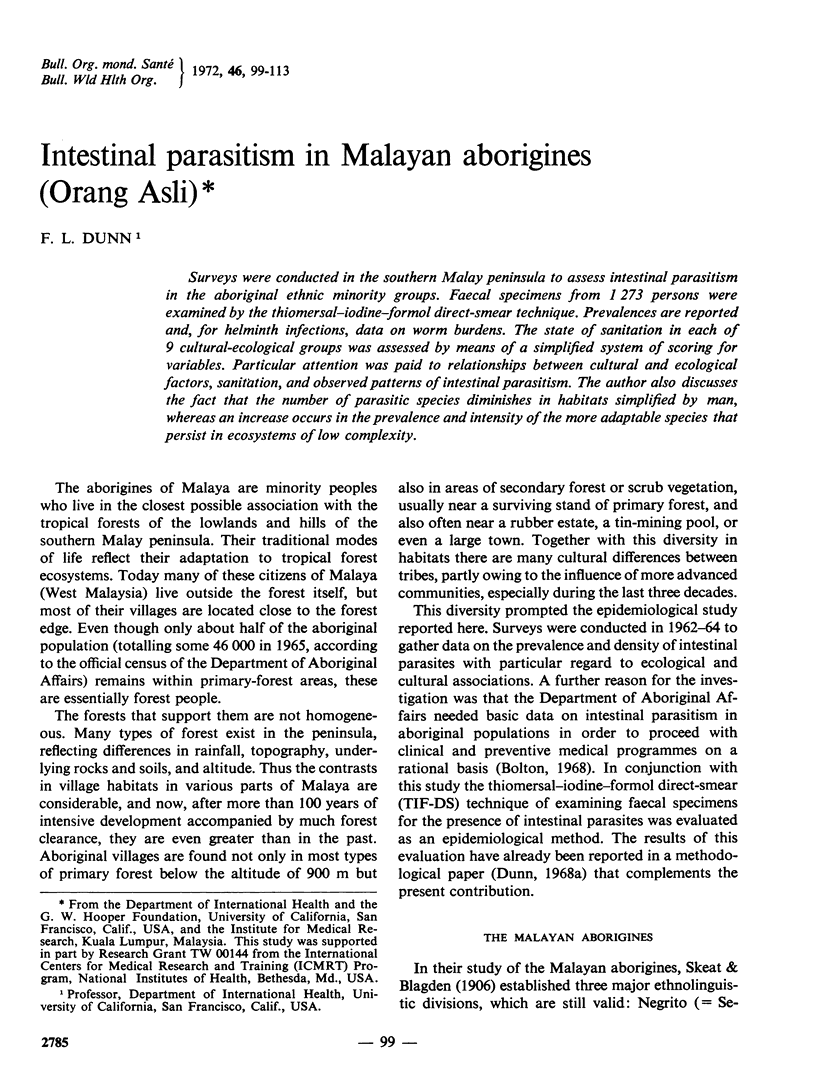

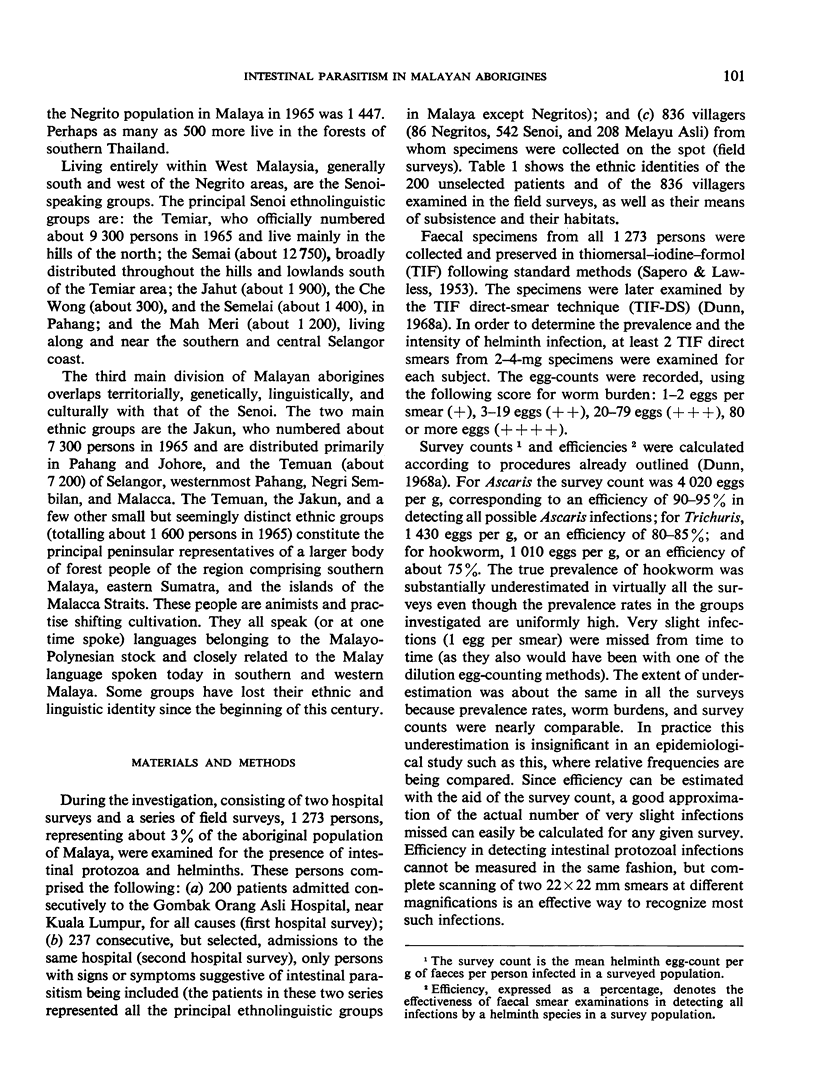

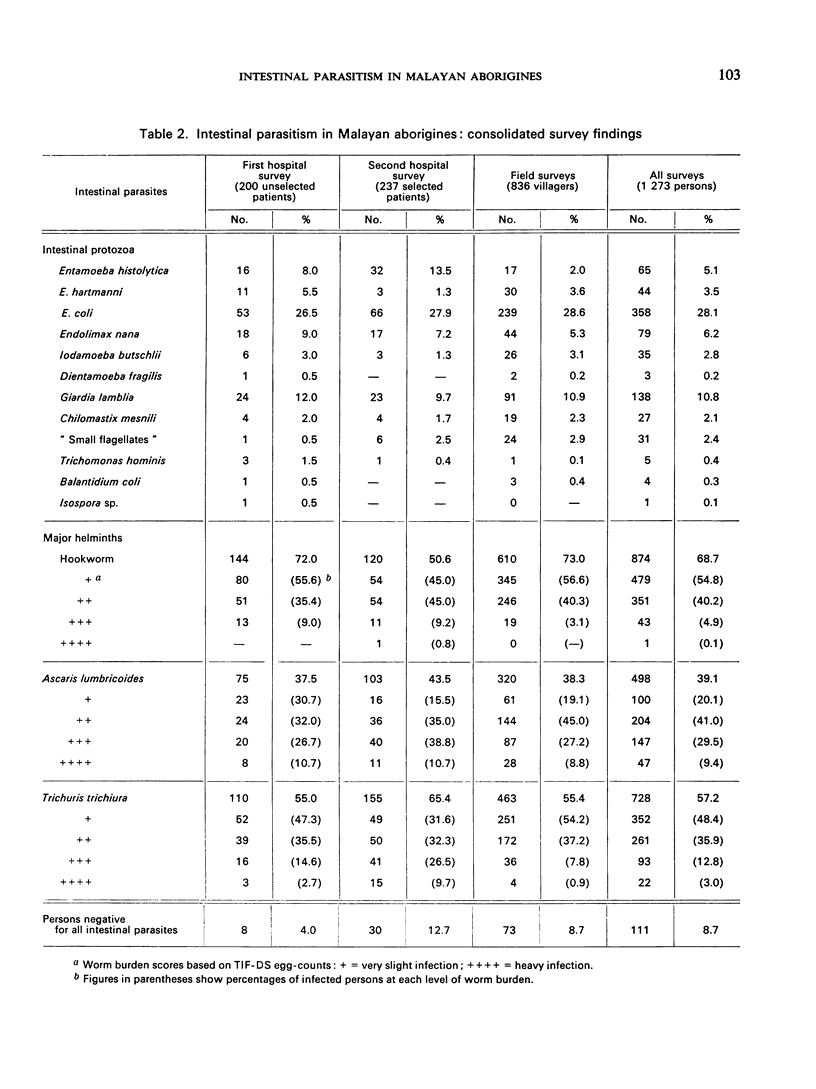
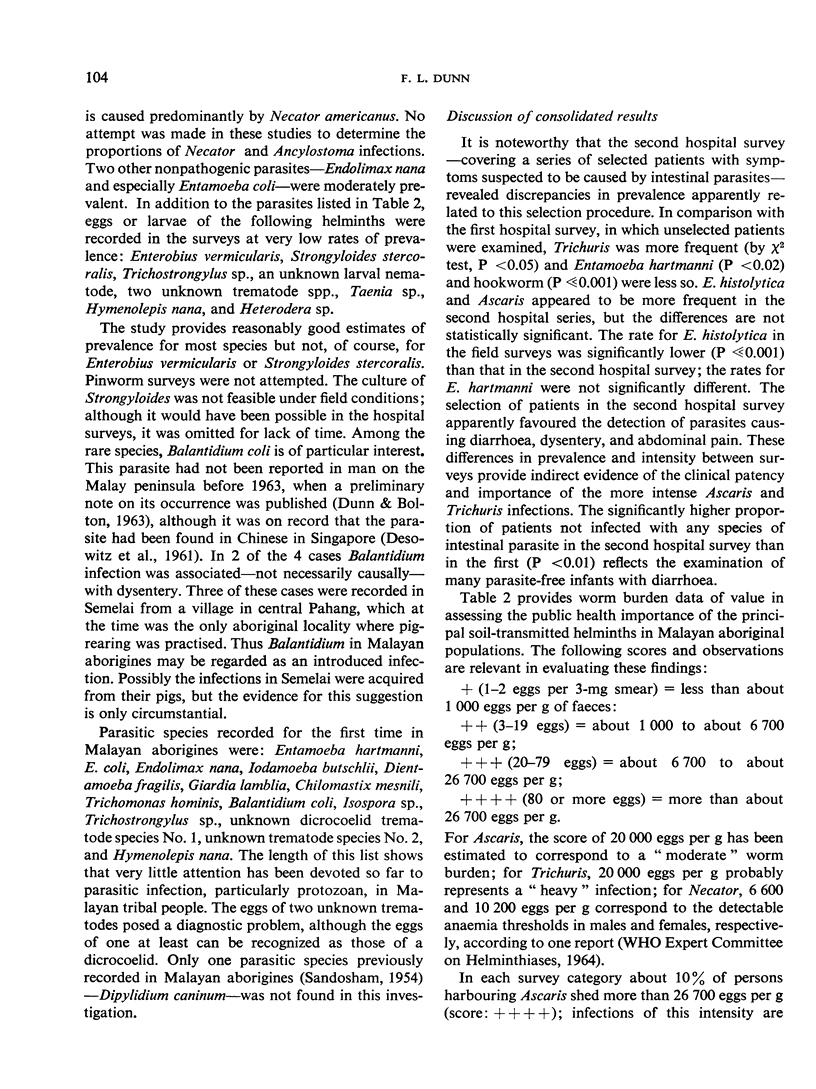


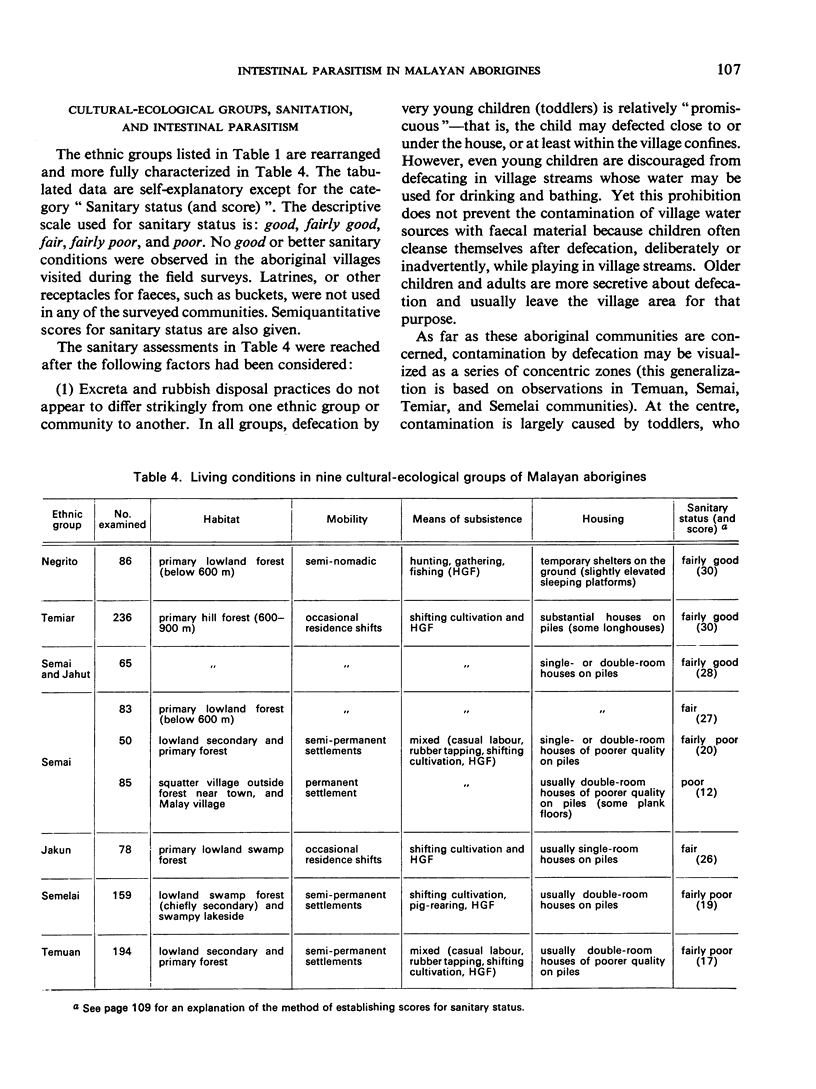

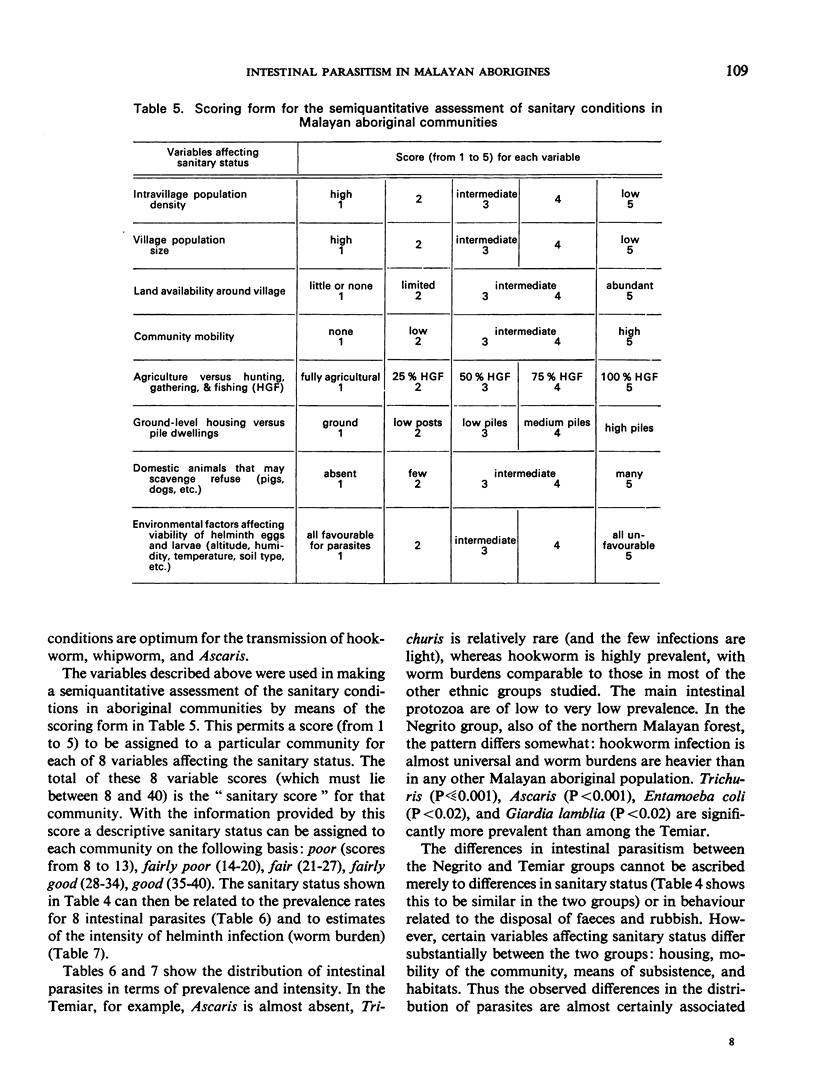

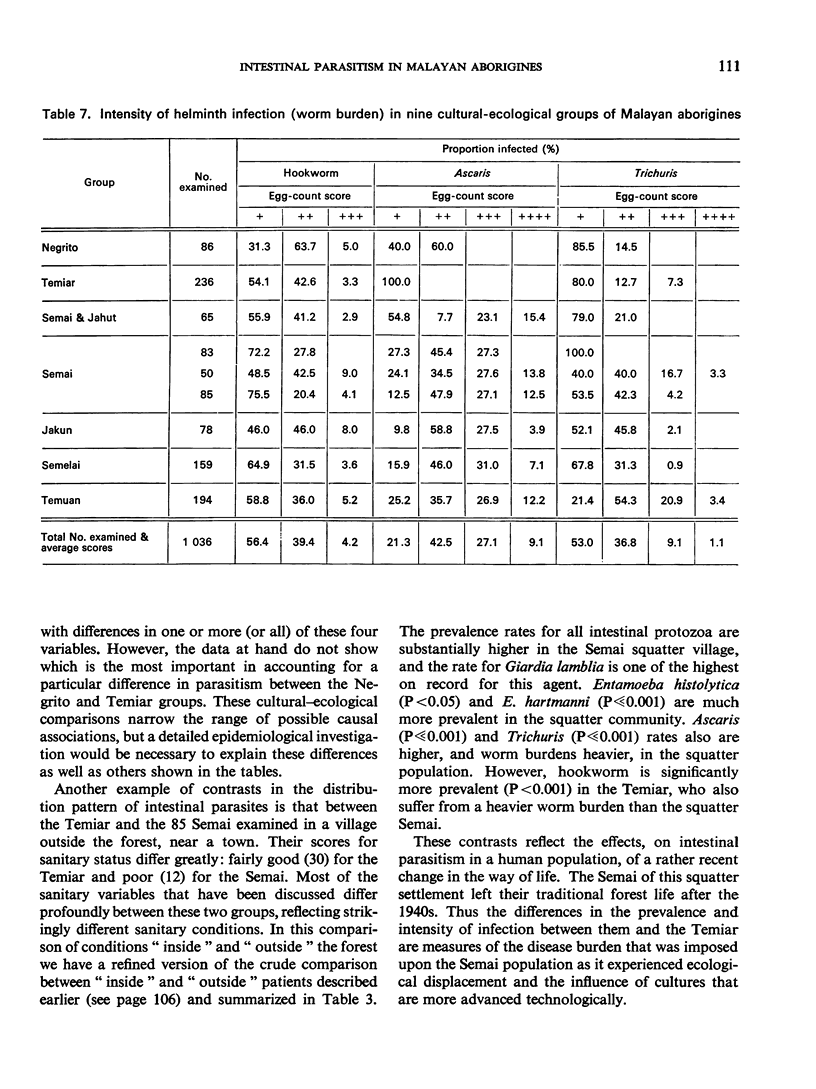
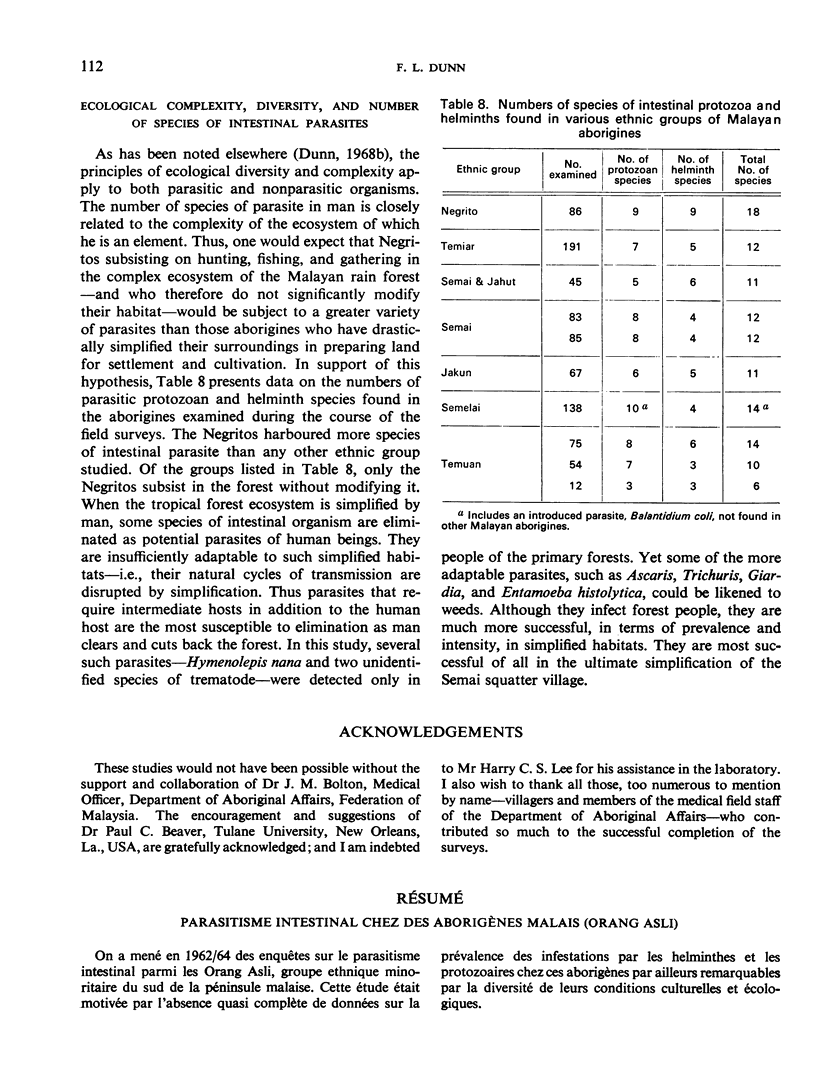
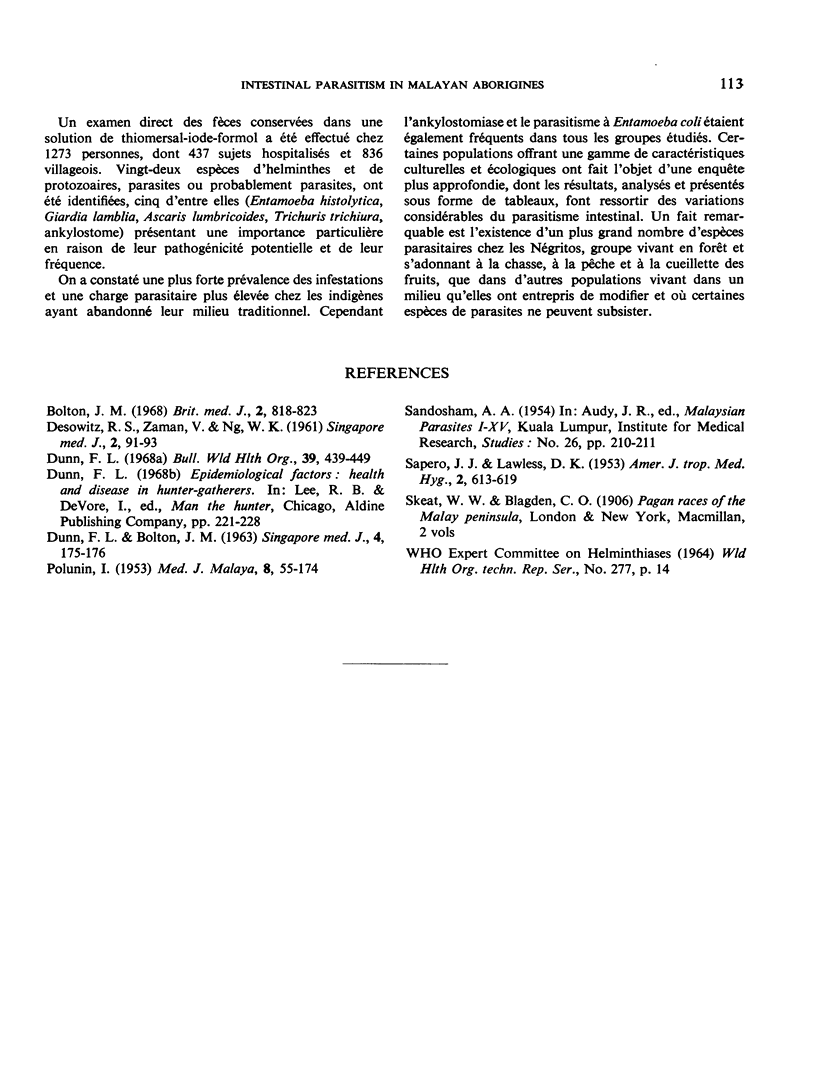
Selected References
These references are in PubMed. This may not be the complete list of references from this article.
- Bolton J. M. Medical services to the aborigines in West Malaysia. Br Med J. 1968 Jun 29;2(5608):818–823. doi: 10.1136/bmj.2.5608.818. [DOI] [PMC free article] [PubMed] [Google Scholar]
- DESOWITZ R. S., ZAMAN V., NGWK The incidence of intestinal parasites in various communities of Singapore Island. Singapore Med J. 1961 Sep;2:91–93. [PubMed] [Google Scholar]
- Dunn F. L. The TIF direct smear as an epidemiological tool; with special reference to counting helminth eggs. Bull World Health Organ. 1968;39(3):439–449. [PMC free article] [PubMed] [Google Scholar]
- SAPERO J. J., LAWLESS D. K. The MIF stain-preservation technic for the identification of intestinal protozoa. Am J Trop Med Hyg. 1953 Jul;2(4):613–619. doi: 10.4269/ajtmh.1953.2.613. [DOI] [PubMed] [Google Scholar]


